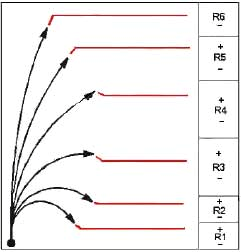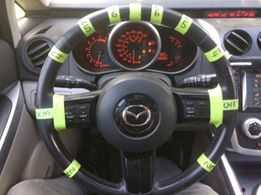Note Writing
FOR THE NEW GUYS
I think that the driver is 50% of the result and the co-driver is the other 50%. OK, wait, the crew is 20%, so it means that the driver is 30%… :). This, of course, means that you want to protect the more valuable asset (the co-driver) by writing good notes.
What are the GOOD NOTES? Obviously, the result of the good notes is that when the co-driver lifts his head from the notes, he can see the next curve instead of minute details of the structure of the bark in front of him.
BUT WHAT DOES IT MEAN – GOOD NOTES? I do not think that it necessarily means that your Left 3 (L3) note is the same as my L3. But, I certainly think that your L3 must be the same as your other L3 and not as your other L4 – i.e. CONSISTENCY is the key.
BUT HOW DO I GET TO WRITE GOOD NOTES? Here is a practical advice – time consuming and boring, but they all usually are.
- Buy a writing pad and a pencil or pen.
- If your spouse loves you, you might ask her to go with you. If you are just about to get divorced, then this probably will not work, and you have to find someone else.
- Find a twisty road. Now, if you have a great memory, you have to find a long twisty road.
- Slowly drive and dictate the notes to your co-driver. Never look back to ensure that the curve is really L3. When looking back you are looking at a different curve.
- Drive slowly again and write the same road again.
- Do it the third time and then try to persuade your spouse that both of you really had a great time.
- Most importantly, when you come home, start comparing your notes and circle the difference between the first and the second and the third run. This is how you figure out which curves are inconsistent.
- Do it the next weekend. This time your spouse will be really, really excited and perhaps the word “divorce” might enter the conversation.
- Do it the third weekend (now there is probably a friend instead of your spouse sitting next to you).
- Do it again and again.
- The most important (and most boring) part is that you have to compare the notes every time after you get back.
One day you will be consistent and the co-drivers will not be putting their personal effects into an envelope with “To my love” written on it just before the Special Stage 1.
Here are two additional notes:
- Always drive slowly so you can really think what that curve is. Even the tenth time around.
- If you start remembering too many curves, you have to find a new and a longer twisty road.
As you go though this boring exercise, keep reminding yourself “Rally is fun”; it will not help, but one day you might beat the next guy just based on the quality of your notes…and stay on the road.


